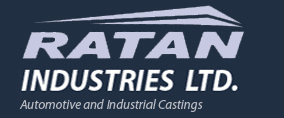The Aerospace industry's water use and reuse can have disastrous effects on the world. Contaminated water from the industry has led to widespread damage around the world. One case involved an underground water basin in Los Angeles, which was rendered unusable by chemicals found in aircraft. The clean-up of the area ended up costing over $21 million. There are several solutions for water-related problems that the industry can implement.
Depending on the location of your home, you might have to purchase an STP to handle your sewage. Generally, residential buildings need at least one STP to treat sewage. Many STPs are located underground, making them difficult to maintain. Moreover, you may not be able to inspect them without hiring an expert. It is better to consult a professional if you have any doubts about the process.
Aircraft water systems
The water used in aircraft rinse processes must be precisely measured to prevent damage to the sensitive components. These systems require regular quarterly maintenance to avoid failures. They use robots to shoot water in a precise direction toward the aircraft. They are easy to install and maintain and can be moved anywhere in the world. Water reuse systems are installed at various locations in the aerospace industry and include technology that monitors pressures and controls flow.

Aircraft manufacturing uses rinse water to debit aluminum, finish titanium, and plate metals and composites. These processes create hazardous waste when not disposed of properly. Aircraft cleaning is another source of wastewater, including the running of onboard amenities. Process rinse water from these processes is also used to wash the interiors of the aircraft. Aerospace manufacturers have found that this reuse technology helps reduce maintenance costs and minimize emissions from exhaust systems and tanks.

Automated wastewater treatment systems
Using automated wastewater treatment systems in the Aerospace industry is a great way to reduce costs and optimize production. These systems are designed to meet EPA requirements and remove the need for onsite monitoring. Besides, automated systems encapsulate pollutants, produce clean, easily dewatered sludge, and manufacture batch systems and industrial wastewater treatment solutions. It also distributes and integrates Cleartreat separating agents.
Automated wastewater treatment systems are becoming more popular with the increasing amount of wastewater produced by the aerospace industry. These systems can save time and money by reducing overflows and water loss during treatment. These overflows can be extremely expensive and environmentally hazardous. In order to avoid such incidents, automated wastewater treatment systems use sensors and send out alarms to notify plant staff when there are problems. They are also a great way to keep essential manufacturers in compliance with environmental regulations.
EPA's Safe Chemical Ingredients List (SCIL)
In an effort to reduce the use of hazardous chemicals in the Aerospace industry, EPA has updated the list to include a more comprehensive set of chemicals. One chemical on the list, CASRN 452080-67-0, has been removed from the list. The EPA determined that the chemical's health and environmental effects were too low to warrant its inclusion on the list. It then marked the chemical with a grey square earlier this year. This is desig
In addition to the list, EPA has issued a Working Approach for Identifying Potential Candidate Chemicals for Prioritization. This Working Approach has been developed in collaboration with EPA and the biobased chemical industry. It is expected to take nine to twelve months to finalize the designations of these chemicals. The deadline for final designation is December 22, 2019.
HAECO's facility in Jinjiang
HAECO Composite Structures (Jinjiang) is a dedicated MRO facility in China focused on repairing and overhauling composite aircraft parts. Located in Fujian Province, Jinjiang is home to the company's composite MRO operations. It is an authorized GE Aviation service centre that provides preventive maintenance inspections on GE90 engines for Boeing 777 aircraft. The facility also provides rotatable spares.
<HAECO Americas is a wholly-owned subsidiary of the HAECO Group, previously known as TIMCO Aviation Services. Its core business is providing comprehensive aircraft care and maintenance services, and it operates two multi-hangar facilities in the U.S. The company also offers a variety of ancillary services, including interior design and engineering, maintenance, and certification services. Its Cabin Solutions division manufactures passenger seating, galleys, and airline cabin components.
International Space Station's water recycling technology
The International Space Station's water recycling technology is currently undergoing testing and development by NASA. The technology has the potential for future long-term space flight as well as commercial use. The system could even be installed on the moon or Mars to build a more sustainable human presence in space. Water is very important in space, where gravity is extremely weak, making water treatment and recycling a major challenge. NASA is currently testing several technologies for water recycling in space, including an ammonia fuel cell, which can convert urine into energy.
The water recycling systems used aboard the space station are designed to reclaim wastewater from three separate stages. First, the liquid is filtered to remove particles and other organic and inorganic impurities. Next, the liquid passes through a semipermeable membrane that removes inorganic impurities and then through a catalytic oxidation reactor, which eliminates volatile organic compounds and bacteria. Eventually, the water is clean enough to be consumed by astronauts. The space station's water recycling technology also helps astronauts conserve water while living on the station. Astronauts use less than four liters of water for a sponge bath and about 50 litres for their daily needs.







































Share Post